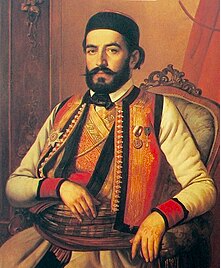Students from our school visited the Cetinje Monastery in honor of Njegoš Day, where they received a warm welcome from Mr. Jovica Vukasović, the religious education teacher and guide for this special visit. We had the privilege of entering the Monastery Treasury, which is not always open to visitors. The Cetinje Church Treasury stands as a “witness” to the cultural and political events that have shaped the life of the Metropolitanate of Montenegro over the centuries. Many precious collections are preserved in the Treasury, some of which our students have already studied in class, while others they will explore in the future.
This visit to the monastery and treasury helped the students connect with their cultural and spiritual identity, supporting the preservation of their heritage.
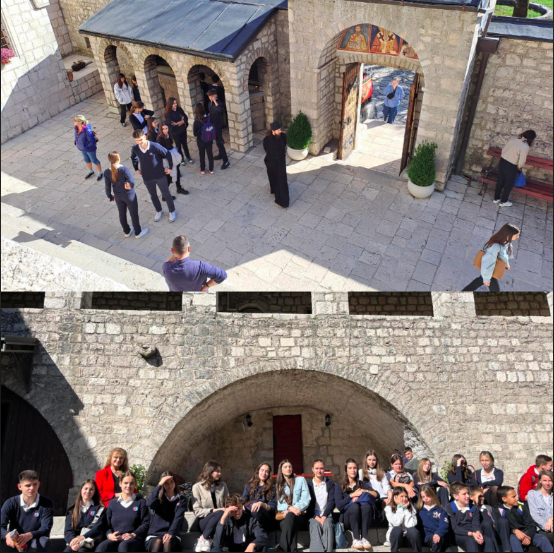
Here’s what our students said about the trip:
Arijana and Marija G: “The field trip in honor of Njegoš’s Day proved to be both educational and interesting. We learned something new about our country and Njegoš by visiting Cetinje and the monastery. The opportunity to delve into the history of our rulers helped us better understand our country’s past and discover many fascinating facts. Additionally, trips like these allow us to bond more as a community and develop new friendships.”
Sofya S: “For me, the trip to Cetinje was an opportunity to learn more about Montenegrin culture. I’m grateful for the chance to learn outside the classroom, and I especially enjoyed spending time with younger students and connecting with them.”
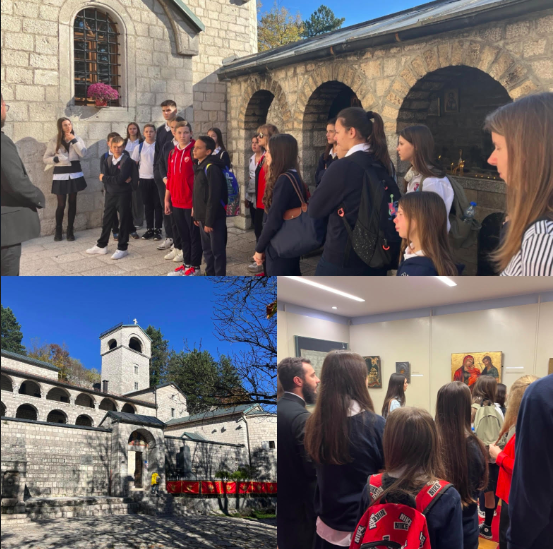
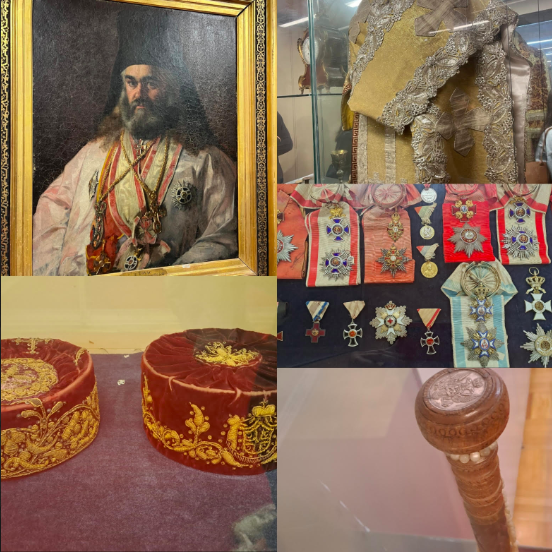
A small part of the wealth from the Treasury
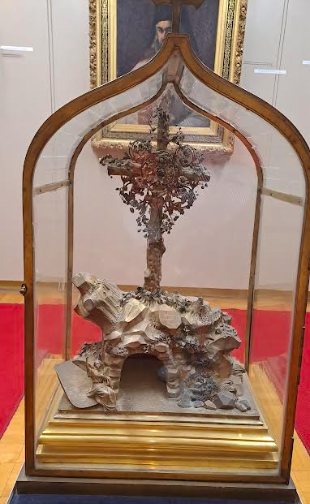
The Cave of Christ’s Nativity and the Cross of the Crucifixion
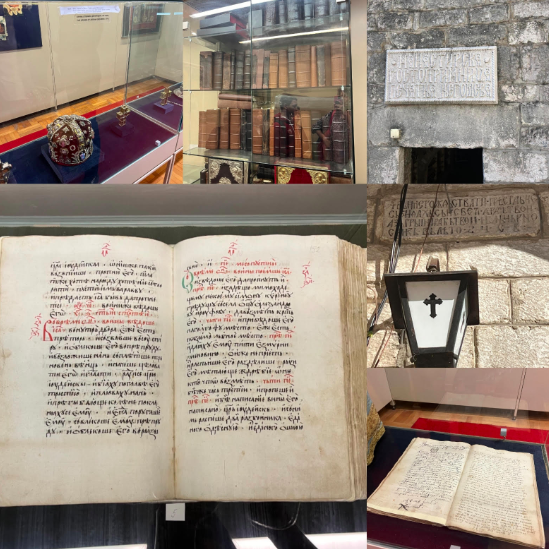
The Oktoih Prvoglasnik is the first Cyrillic printed book among the South Slavs. Printing of this first Montenegrin incunabulum, a liturgical book, began in the winter of 1493 and was completed on January 4, 1494. Among the books printed by Hieromonk Makarije at the Crnojević printing press in Obod, the Oktoih Prvoglasnik stands out for its artistic beauty and exquisite initials. It exemplifies the highest achievements of 15th-century printing and, in terms of graphic quality, rivals the Venetian production of that era. A total of 105 copies have been preserved to this day.

